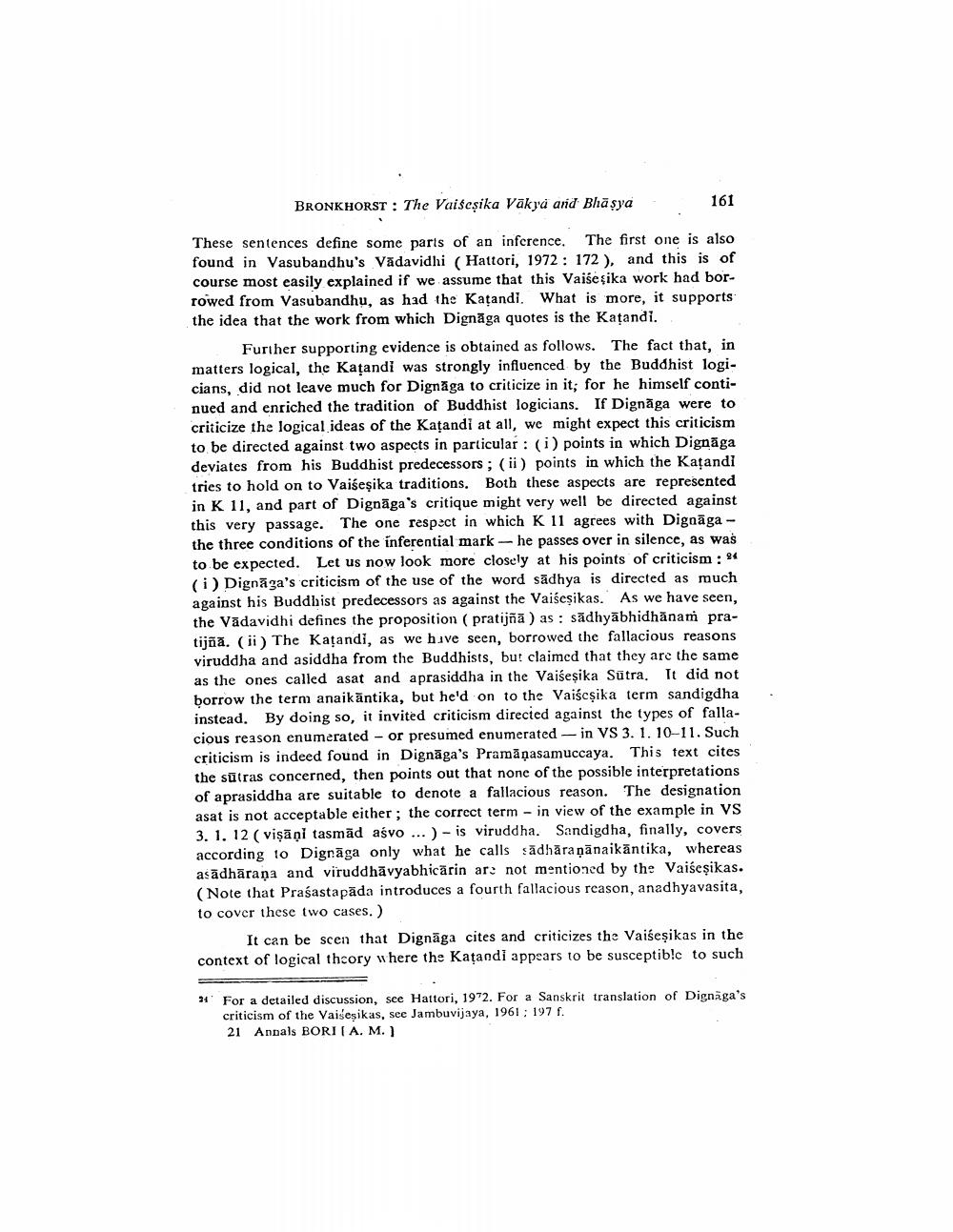________________
BRONKHORST : The Vaiseșika Vākya and Bhäsya
161
These sentences define some parts of an inference. The first one is also found in Vasubandhu's Vadavidhi ( Hattori, 1972: 172 ), and this is of course most easily explained if we assume that this Vaiseçika work had borrowed from Vasubandhu, as had the Kațandi. What is more, it supports the idea that the work from which Dignāga quotes is the Kațandi.
Further supporting evidence is obtained as follows. The fact that, in matters logical, the Kațandi was strongly influenced by the Buddhist logicians, did not leave much for Dignāga to criticize in it; for he himself continued and enriched the tradition of Buddhist logicians. If Dignāga were to criticize the logical ideas of the Kațandi at all, we might expect this criticism to be directed against two aspects in particular: (i) points in which Dignāga deviates from his Buddhist predecessors; (ii) points in which the Kafandi tries to hold on to Vaiśesika traditions. Both these aspects are represented in K 11, and part of Dignāga's critique might very well be directed against this very passage. The one respect in which K 11 agrees with Dignāga - the three conditions of the inferential mark -- he passes over in silence, as was to be expected. Let us now look more closely at his points of criticism : 24 (i) Dignāga's criticism of the use of the word sādhya is directed as much against his Buddhist predecessors as against the Vaišeşikas. As we have seen, the Vādavidhi defines the proposition (pratijñā ) as : sādhyābhidhānam pratijñā. (ii) The Kațandi, as we have seen, borrowed the fallacious reasons viruddha and asiddha from the Buddhists, but claimed that they are the same as the ones called asat and aprasiddha in the Vaiseșika Sutra. It did not borrow the term anaikāntika, but held on to the Vaiścsika term sandigdha instead. By doing so, it invited criticism directed against the types of fallacious reason enumerated - or presumed enumerated - in VS 3. 1. 10-11. Such criticism is indeed found in Dignāga's Pramāṇasamuccaya. This text cites the sūtras concerned, then points out that none of the possible interpretations of aprasiddha are suitable to denote a fallacious reason. The designation asat is not acceptable either, the correct term - in view of the example in VS 3. 1. 12 (vişāņi tasmād aśvo ... ) - is viruddha. Sandigdha, finally, covers according to Dignāga only what he calls adhāraṇānaikāntika, whereas asādhārana and viruddhāvyabhicärin are not mentioned by the Vaiśeşikas. (Note that Prasastapāda introduces a fourth fallacious reason, anadhyavasita, to cover these two cases.)
It can be seen that Dignāga cites and criticizes the Vaišeşikas in the context of logical theory where the katandi appears to be susceptible to such
24' For a detailed discussion, see Hattori, 1972. For a Sanskrit translation of Dignaga's
criticism of the Vaisesikas, see Jambuvijaya, 1961; 197 f. 21 Annals BORI (A. M. 1




